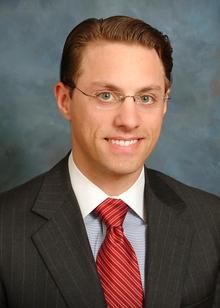 For the most part, the laws that govern the practice of medicine in the United States are state laws. One of the few things those laws agree on is that jurisdiction of those laws is based on the patient's location, not the doctor's. That's tough news for a mobile health company that wants to establish any sort of multi-state telemedicine practice, whether it's evaluating moles and blemishes via store-and-forward dermatology or doing virtual video consultations on an iPad.
For the most part, the laws that govern the practice of medicine in the United States are state laws. One of the few things those laws agree on is that jurisdiction of those laws is based on the patient's location, not the doctor's. That's tough news for a mobile health company that wants to establish any sort of multi-state telemedicine practice, whether it's evaluating moles and blemishes via store-and-forward dermatology or doing virtual video consultations on an iPad.
"It's relatively easy to do [telemedicine] if you're going to stay within your particular state," Nathaniel Lacktman, a senior counsel at Foley and Lardner, said at the mHealth Summit this week near Washington, D.C. "But if you really want to expand your reach, and be revolutionary or just make a whole lot of money, you're going to need to go cross-border. Because of that you will be subject to the laws of that particular state. Across the country, where the patient is located, those are the laws that govern."
Some federal legislation has attempted to tackle the problems, and some attempts have been more successful than others. In 2011, a law passed allowing Department of Defense doctors to treat armed forces members in any state regardless of licensure. A similar bill is currently being considered for Medicare patients and Medicare providers, and a couple of other, general bills have been proposed over the last two years.
But the fact is that licensure is just the tip of the iceberg. At the Summit in Washington, D.C. this week, speakers laid out a number of other challenges in addition to licensing for state-to-state telemedicine.
1. Licensing
The American Telemedicine Association estimates that getting doctors licensed in additional states for telemedicine costs physicians $300 million per year. Lacktman said there are some exceptions to licensure laws for telemedicine, but they're not broad or consistent. For example, every state has a remote exception for post-surgical consultations. But some of those require the consultation to be free, some can only be hospital to hospital, and different states have different definitions of a consultation.
The situation is a little better for nurses, because something called a multistate nurse licensure compact. Within a subset of states that have signed on to the compact, any licensed nurse can apply for a multistate license and practice nursing in all of the included states.
2. Scope of practice
"Let's assume you didn't have to have a license to practice medicine in any state, or you're a super doctor licensed in every state," said Lacktman. "Just because you have a license doesn't mean you can do all the things you do in your home state. Every state board has the duty to enforce standard of care in their community."
One of the most vexing standard of care provisions for telemedicine is the notion of doctor-patient relationships. Many states allow doctors and patients in an established relationship to meet virtually, but require the relationship to be established in an initial face-to-face meeting.
"Well that throws a huge obstacle in a business model that's predicated on attracting patients and never having an in-person practice," Lacktman said. "Because how's your doctor going to travel all over the country for a single consult?"
In addition, some states have special informed consent laws or particular forms for telemedicine.
3. Credentialing
At one mHealth Summit Q&A, Donald Kosiak, a physician at Avera eCare, expressed that his problem wasn't licensing but credentialing. To practice hospital-to-hospital telemedicine, many hospital bylaws and state laws require physicians to be credentialed as if they were employees in the remote hospital -- sometimes including maintaining their own health, participating in staff education, and other requirements that don't quite seem to apply.
"Now I'm credentialed in 150 different hospitals with individual DEA numbers, they all want me to get TB tests at different times, even though I'm only working with these patients over telemedicine, and there's no way I could give them TB," Kosiak said.
The Centers for Medicare and Medicaid services have introduced a proxy rule for credentialing that could alleviate some of that pressure, according to Alexis Gilmore, a partner at Jones Day.
5. Remote prescribing
Remote prescribing is also covered under scope of practice, but with additional complications. For one thing, the state pharmacy board's standard of care might have its own rules. And of course, the prescription of controlled substances can be regulated differently in different states.
"There's a whole set of rules on remote prescribing, what you're allowed to do, what you're not allowed to do," Lacktman said. "Rule of thumb: prescribing is more restrictive than consults."
6. Contracting
"Once you have all the licensing, scope of practice, and reimbursement issues, you really have to be conscious of the contractual arrangements for your professionals," Lacktman said. "It's not just your own state laws that govern it anymore. You're practicing in all these other states."
That means, for a business employing multiple doctors, the arrangement for paying doctors has to conform with all states' fee-splitting laws, practice of medicine laws, and anti-kickback statutes, which essentially prohibit doctors from buying and selling referrals.



















